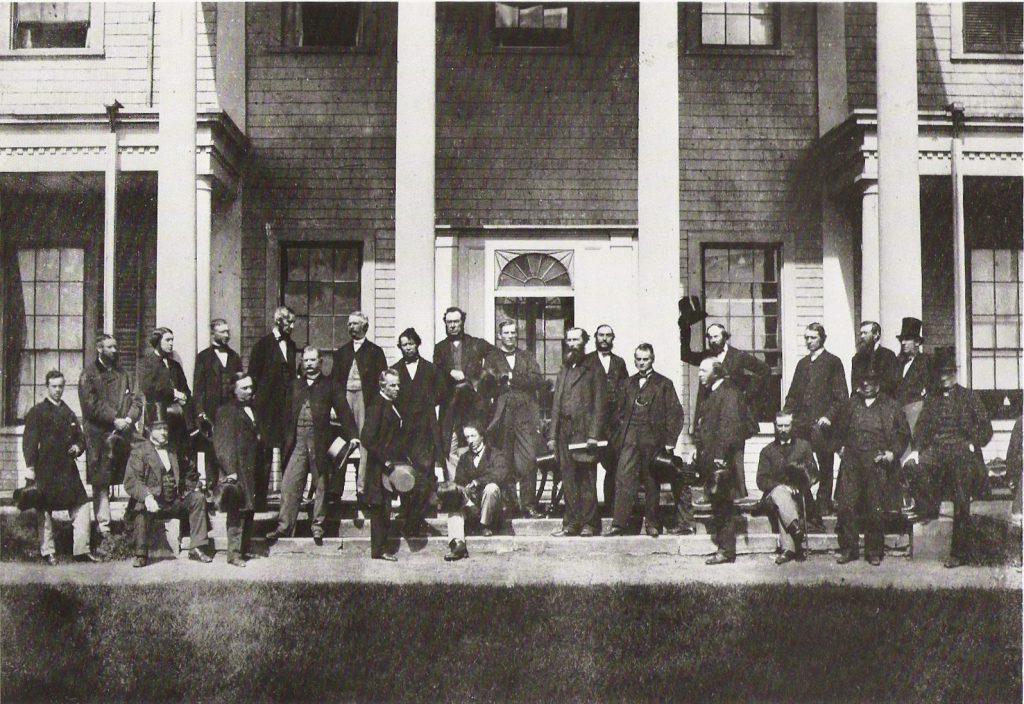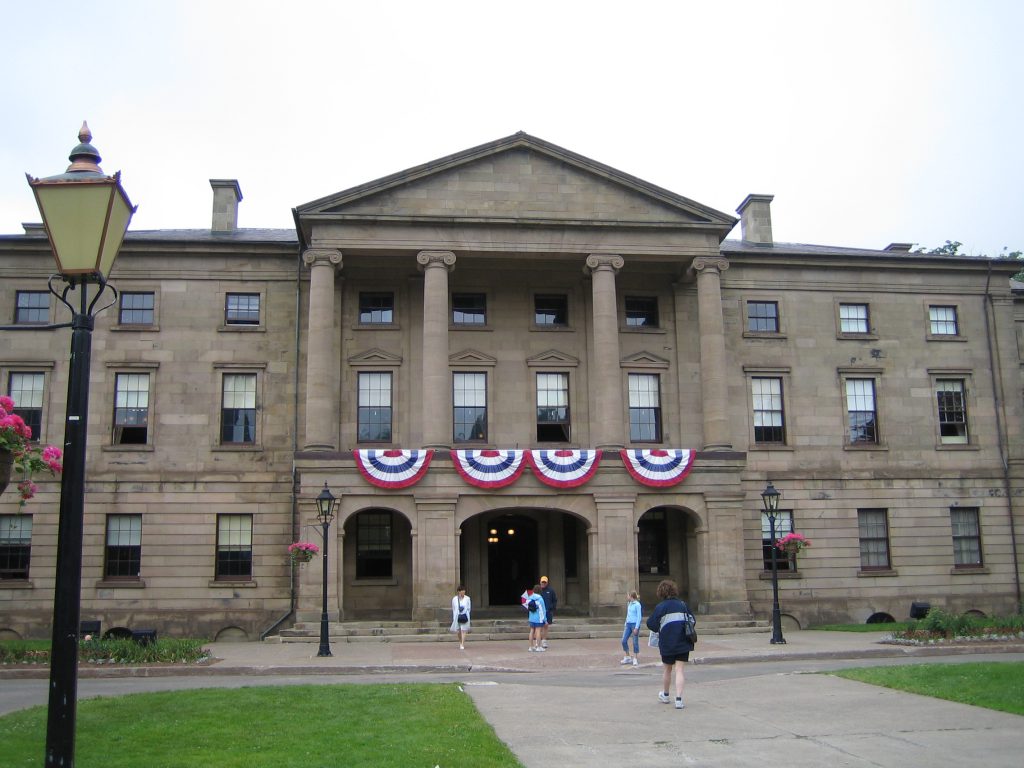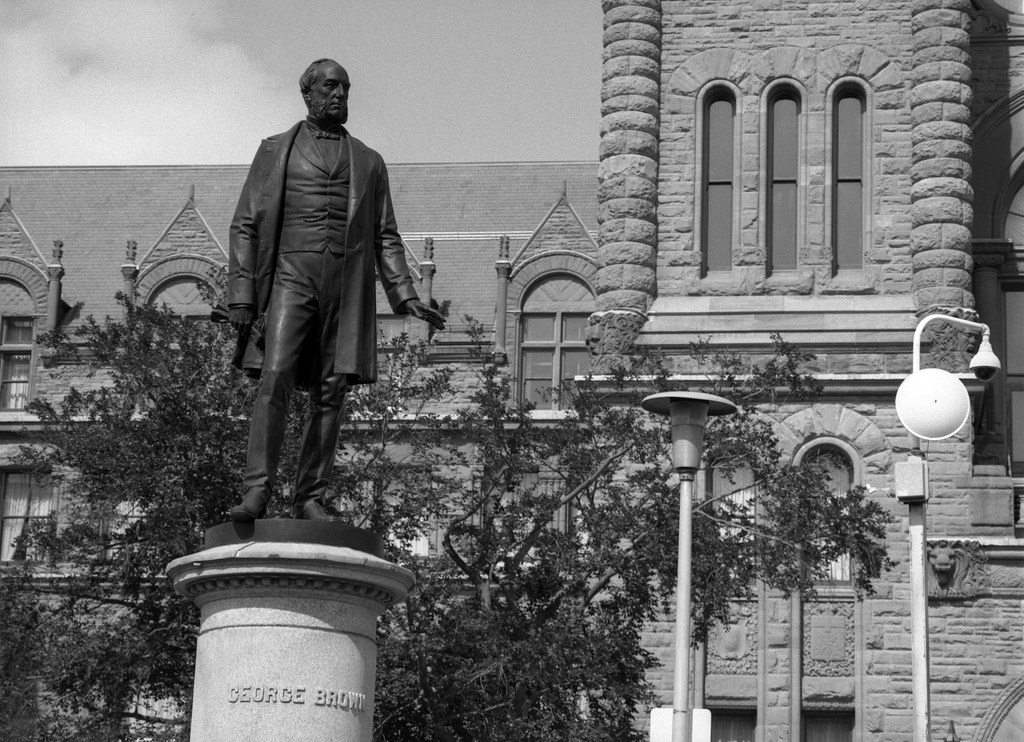One of the greatest misconceptions about confederation is that Canada sprung forth fully formed from the passage of the British North America Act in 1867, in reality, the modern Canada we know today was a long way off in 1867. It wasn’t until 1999 that the last territory, Nunavut would be carved out of the Northwest Territory. In 1864 a majority of the British holdings in North America remained in the hands of the Hudson Bay Company as Rupert’s Land, the colonies were each a separate entity, Vancouver Island, British Columbia, Red River, Canada, New Brunswick, Nova Scotia, Prince Edward Island, and Newfoundland. Most had responsible self-rule, and in 1864 the three neighbouring Maritime provinces were considering union. The idea of united Nova Scotia, New Brunswick, and Prince Edward Island had been explored as far back as the late 18th Century. The current push for unification came from the Lieutenant-Governor of New Brunswick, Sir Arthur Hamilton Gordon. With the ongoing American Civil War, the idea to unify worked in the way of defending the colonies plus it also made sense from governance and economic stance. And delegates were ready to gather in Charlottetown to discuss such a Maritime Union, at least until a letter arrived from the Governor-General, Sir Charles Monck. The premieres, while a little unsure of why the Canadians wished to join them, they agreed to let them attend. A word from the Colonial Office also decided for the group to meet for a wider union and that they would not dismiss any well-conceived planned that did not harm Imperial interests. The only province who did not get an invite would be Newfoundland, and while they did express an interest, it was too late for them to arrange and send delegates.

George P. Roberts [Public domain], via Wikimedia Commons
The Canadian delegates numbered eight men, the premieres John A. MacDonald and George-Étienne Cartier along with six members of their cabinet, George Brown, Thomas-D’Arcy McGee, Alexander Galt, Alexander Campbell, Hector Langevin, and William McDougall. They also brought along their staff and wives. Arriving in Charlottetown in early September they found a city in chaos. In addition to the political conference, a circus was in town for the same weekend. And so tied up where the workers in the city’s harbour it fell to Henry Pope, one of the delegates from Prince Edward Island to row out to the SS Victoria to greet and guide the Canadian steamer into its birth. Representatives were forced to remain aboard the Victoria others would seek rooms aboard the SS Franklin, and some would be welcomed into the homes of the delegates from Prince Edward Island. The only diversity in the delegate would be in their ages, with the youngest being thirty-five and the oldest sixty-four. There was no involvement from women, people of colour, or indigenous leaders. And despite the weight of the topic for the conference it proved to be a wild party. And the Canadians would become the life of the said party: lavish dinners, champagne, and fine cigars. Delegates danced, ate, and toured the island. The only day that no parties or even meetings were held was on Sunday.

Share Bear (dmahalin@gmail.com) [Public domain], via Wikimedia Commons
But the Canadians didn’t just know how to party. They came well prepared for selling the idea of a union of all the provinces. Chief among them was George Brown, who spoke for two days to outline his Constitution that would both grant near total independence from not only the Colonial Office but the British Parliament as well when it came to local affairs. Allowed the united provinces to remain a part of the British Empire. And John A. MacDonald would move in and make the grand sales pitch to bring them all on board with the matter. Most of the discussions occurred inside the Prince Edward Island Legislature in a splendid chamber set aside for such meetings. The Canadians overshadowed everyone, taking over the original purpose of the meeting. And the Maritime leaders went along with the whole thing. Finally, they would meet on the 6th of September. Both Henry Pope and Charles Tupper were sold on the matter and that a Maritime Union was nothing more than a moot point and could be explored at a later juncture. And while some had their reservations, they agreed to proceed with the Canadian idea. While no significant discussions on the structure of this new union were held, the group decided that the second meeting in October was needed to answer all these questions. Some of the big ones included the idea of a transcontinental railroad, the seat of government, and government structure. The conference ended with one final dinner and dance. During a lull in the music, one delegate stood up and spoke the words of the Wedding Banns, one we’re all familiar with. If anyone knows a reason why these provinces should not be wed, speak now or forever hold your peace. The room fell silent. All those attending took this as a good sign that the union would go ahead. But the fact was that nothing was sure. There were some who through the idea was a grand one, while still, some had their reservations among all the provincial governments.

Mamiya m645 – Mamiya-Sekor C 150mm 1:3.5 N – Ilford FP4+ @ ASA-125 – Blazinal (1+25) 9:00 @ 20C
Today we collectively remember the group of delegates that attended Charlottetown and Quebec as the Father’s of Confederation. And while the term Confederation would not come to apply to this union until the Quebec Conference, it still is used today to describe the joining of the original four provinces that made up the Dominion of Canada. And while I was unable to visit Prince Edward Island to collect the images needed, I am grateful for the wide selection of public domain images such as the photograph of the delegates and the Province House. Today you can visit the Province House on Prince Edward Island. Constructed in 1843 it is the oldest seat of government in Canada still in use today. The provincial legislature meets in one wing, while the second wing is maintained by Parks Canada and houses the original room where the conference took place and today is known as Confederation Hall. And while the building is currently undergoing extensive restoration work, it remains on my list of places to visit in our amazing country. But after the work has been completed.